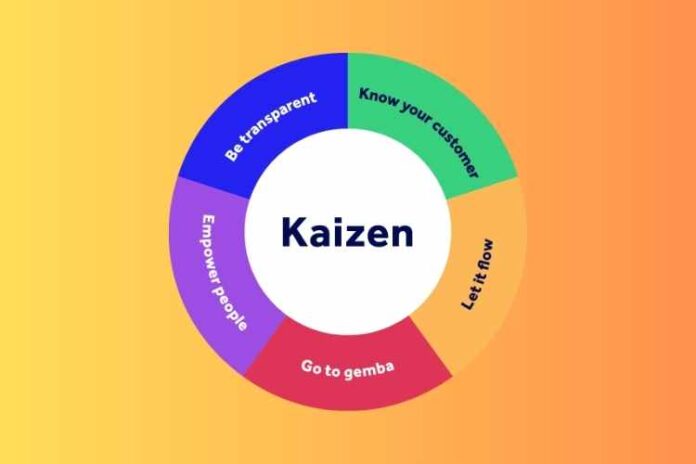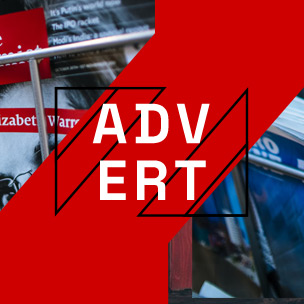Before we discuss the Kaizen technique firstly we should know the meaning of the Kaizen technique and how it works. Also in this article, we will talk about the principles of the Kaizen technique and everything related to this technique will be discussed.
What is Kaizen?
Kaizen is a strategy to create successive progress based on the concept that slight, endless positive differences can reap important progress. Generally, it contrasts techniques that rely on dramatic or top-down reforms to achieve transformation and relies on cooperation and commitment. Kaizen is essential to both the Toyota Way and lean manufacturing. It was formulated in the manufacturing sector to reduce flaws, increase productivity, eliminate junk, encourage employee objectives and responsibility, and stimulate innovation.
It is a wide concept that brings many interpretations and in numerous other industries comprising healthcare, it has been adopted. Any business sector can use it, even at the individual level over the phone. Value stream mapping, which records, analyses, and improves the information or material flow necessary to produce a good or service, and total quality management, a management framework that engages employees at all levels to concentrate on quality improvements, are two methods and tools that can be used with kaizen.
Kaizen is a combination of two Japanese words that together mean “good change” or “progress.” Nonetheless, Kaizen has come to indicate “constant improvement” due to its association with lean procedures and regulations.
History of Kaizen:
The post-World War II Japanese quality circles are where kaizen initially originated. These teams or circles of employees concentrated on reducing errors at Toyota. They were developed in part in reaction to American productivity and management consultants, particularly W. Edwards Deming, who visited the country and urged that line workers should have more direct supervision over quality. Through the publication of his book Kaizen: The Key to Japan’s Competitive Success in 1986, Masaaki Imai brought Kaizen to the West and popularised it.
Now let’s talk about Kaizen Technique and how it works.
RELATED – Why Every Hotel & Restaurant Needs At Least One Catering Trolley
About Kaizen Technique
Kaizen, often known as the “one-minute principle” for self-improvement, is a fantastic Japanese method for overcoming laziness and completing tasks.
The concept or idea behind this method is that people should dedicate themselves to an action
every day at the same time, for at least a minute. The word suggests ‘kai’ (change) and ‘zen’ (knowledge) and it was developed by Masaaki Imai, a well-known Japanese management consultant and organizational theorist known for his work on quality management.
Kaizen is a method applied to improve management skills and enable personal expansion in Japan.
The Kaizen strategy’s theme, according to Imai, is that no day should pass without some sort of improvement being achieved somewhere. Kaizen is a process that must be used repeatedly to have an instant impact. You have to commit to it for the long run, he continues.
How does it work?
Kaizen is an easy technique that requires merely a minute of your life each day. For example, if you want to read a book or practice dance, you must devote a minute of your time to accomplishing it, each day at the exact time. Having stated that, regardless of how disinclined you are to do the activity, you always make an effort to get up and give it your best effort for a brief period, even when you consider it to be a waste of time. However, this method only requires a minute to function.
10 principles of Kaizen
Because implementing Kaizen needs to facilitate the right perspective throughout a company, the ten principles that address the Kaizen mindset are frequently referred to as the foundation of the concept throughout ut organization. As follows:
- Let go of presumptions.
- Be foreseeing about solving difficulties.
- Put aside perfectionism and adopt an iterative, adaptive transformation mindset.
- Look for answers as you find blunders.
- Create an atmosphere in which everyone senses certified to contribute.
- Reject statements and opinions from numerous people.
- Use creativeness to discover low-cost, small modifications.
- Do not stop yourself from being improved.
- Ask “why” five times to get to the reason for the problem rather than accepting the obvious problem.
- Mainly focus on yourself and your opinion, not others’ opinions.
Kaizen cycle for constant improvement-
Kaizen can be carried out in a seven-step process to create an atmosphere dependent on constant improvement. The following steps are part of this routine process:
- Get staff members involved.
Encourage employee involvement, and enlist their aid in identifying challenges and issues. This encourages support for change. This is frequently organized as certain teams of people are tasked with obtaining and disseminating data from a larger group of employees.
- Discover crises. Utilizing overall feedback from every employee, make a list of difficulties and possible opportunities. If there are any problems then create a list.
- Find a solution. Motivate employees to submit innovative solutions, with all methods of ideas uplifted. Select the best solution or the solutions derived from the ideas put forward.
- Examine the solution. Implement the winning strategy that was determined above with participation from everyone. To test the solution, start pilot programs or take other simple actions.
- Interpret the outcomes. At different gaps, inspect the improvement, with distinct strategies for identifying the point of contact and motivating low-level employees. Specify how victorious the transition has been.
- Prefer the solution throughout the organization if the consequences are optimistic.
- Repeating these seven-step processes over time is advised, with new solutions tried when necessary or fresh lists of problems to be solved.
Kaizen 5S framework
A 5S framework is a crucial part of the Kaizen technique and specifies a standard physical workplace. The 5Ses emphasizes developing optical order, cleanliness, organization,
and standardization to enhance
profits, effectiveness, safety, and services. The Japanese “5Ses” and their standard English translations are listed below.
- Seiri/Sort (organise). Separate essential workplace things from unneeded ones and remove needless things.
- Seiton/Set in order (make orderliness). Make sure everything is set up in a way that is practical for work and easy to access.
- Seiso/Shine (Tidyliness). Maintain the workspace tidy and clean.
- Seiketsu/Standardise (formalized cleaning). Set up
best practices for workplace cleaning.
- Shitsuke/Sustain (discipline). Maintain your efforts.
RELATED – The Top Cleaning Utensils That Every Growing Business Needs
Frequently Asked Questions
What is the main reason for the crisis?
If a culture that consistently rejects change is undesirable, spending money on the incorrect issue is much worse. Leaders should challenge their presumptions about what (or who) is incorrect and explore the problem more thoroughly by practicing. By speaking with them directly and viewing their work up close, you may better position yourself to spot quality gaps.
Learn not to denounce, discover faults, and fault people; rather, generously immerse everything that is presently going on because it is a better accurate truth of a regular day in operations.
2. How else can we keep getting better?
The path to continual development is not distinguished by the pursuit of perfection, but rather by a desire for both individual and collective growth. Now is an excellent time to reach half of your improvement targets; enjoy the victory, but keep working to get better. Because kaizen is an ongoing process, take the initiative to solve issues at work. Through years of ongoing invention, the kaizen cycle seeks to continue delivering ideas that will shape entire industries.

























